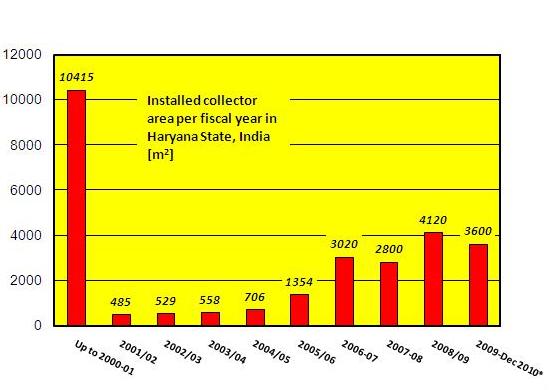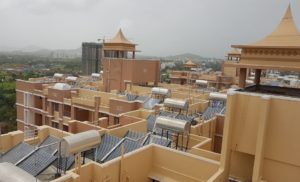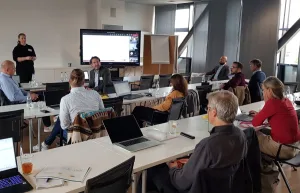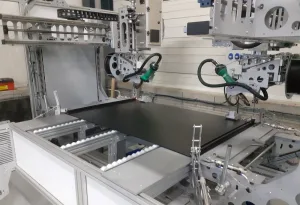

Installed collector area
Haryana State, India: Still a Small Market Size, Despite Great Political Efforts
 The case study on the Northern Indian State of Haryana shows that great efforts will be needed to reach any significant increase in solar thermal market growth.
The case study on the Northern Indian State of Haryana shows that great efforts will be needed to reach any significant increase in solar thermal market growth.
Source: HAREDA
Although the amount of installed collector area tripled between 2005/06 and 2006/07 thanks to constant investment subsidies and a solar bye-law, the market is, all in all, still of a small size.
The figures in the lead paragraph refer to fiscal years in India, which start on the 1st of April and come to a close on the 31st of March in the following year. Naturally, the figures for 2009/10 have not yet been taken down completely. All of the above-mentioned figures were provided by the Haryana Renewable Energy Development Agency (HAREDA) in “litres per day (lpd)”, which required a conversion into m2 (with a conversion factor of 100 lpd equalling 1 m2 of collector area).
“Back in 2005, our state was the first in India to announce energy conservation measures, including mandatory regulations for solar water heating systems (SWHs), in all commercial and residential buildings that were built on a ground size of 420 m2 and above and falling within the responsibility of Municipal Committees/Corporations and Haryana Urban Development Agency (HUDA) Sectors,” explains HUDA director Sumita Mishra.
Parallel to this support policy, HAREDA increased the subsidy scheme for commercial and residential clients. The agency supported solar water heaters right from its foundation in 1997, but the amount of incentives varied from year to year. The amounts have now remained constant for the last three years and are paid even if the system is demanded by the solar bye-law of the state (see the following table).
| Sector | System | Amount of incentives (India Rupees = INR) |
| Residential | Thermosiphon system with 1 flat plate collector | INR 5,000 per system |
| Thermosiphon system with 2 flat plate collectors | INR 10,000 per system | |
| Thermosiphon system with a vacuum tube collector providing 100 litres per day | INR 4,000 per system | |
| Thermosiphon system with two vacuum tube collectors providing 200 litres per day | INR 8,000 per system | |
| Commercial and industrial | Solar thermal system with either flat plate or vacuum tube collectors | 1,400 INR/m2 |
Investment subsidies the Haryana Renewable Energy Development Agency (HAREDA) pays out to clients. Besides that, the state power utility provides monthly rebates on electricity bills for households with an SWH – ranging from INR 100 for a single collector system to INR 300 for a triple collector system. See also attached guidelines for the incentive programme.
Source: HAREDA (http://www.hareda.gov.in)
According to HAREDA officials, Haryana is the only state in the country that provides financial assistance for up to 90 % of the installation costs of SWHs in social sector institutions, such as hostels for underprivileged students, Red Cross Institutions, accommodation for working women, elderly homes etc. The subsidy is granted to the client after the installation has been verified at the district level.
The effect of all these measures can be seen in the chart at the beginning. The amount of installed m2 of collector area almost tripled between 2005/06, with 1,354 m2, and 2006/07 with 3,020 m2.
The strong increase in market volume is a good sign, albeit total market size remains on a small scale – considering the more than 21 million people who live in the northern Indian state.
The total amount of m2 installed in the state since the beginning of the statistics sums up to 27,586 m2, 90 % of it for the residential sector. Another 1,451 m2 were installed in social institutions and 1,136 m2 in the commercial sector.


